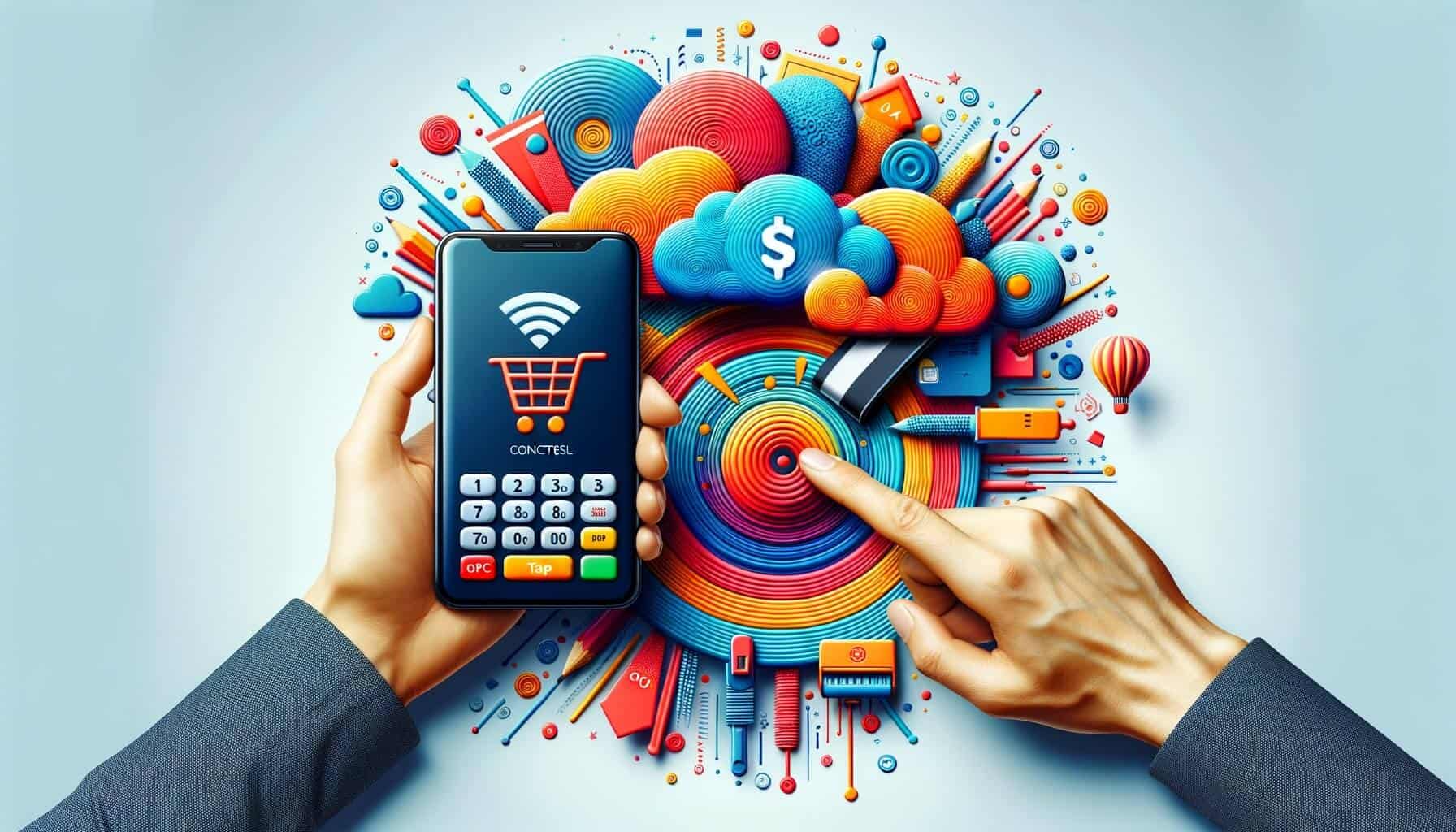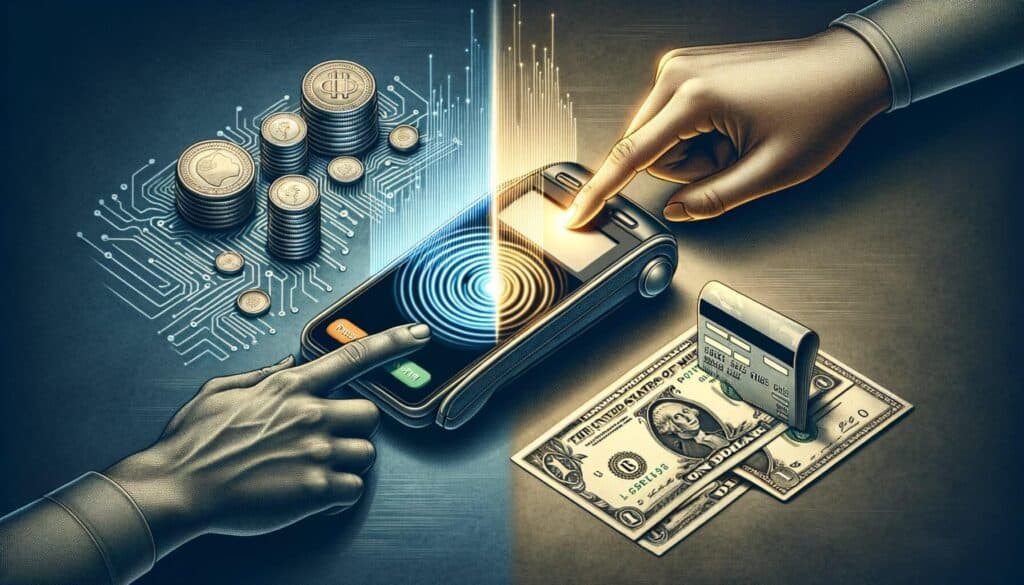
By Carol Peters December 26, 2024
Tap-to-Mobile, also known as Tap-to-Phone, is a revolutionary technology that allows businesses to accept contactless payments directly on their mobile devices. With the rise of smartphones and the increasing popularity of contactless payments, Tap-to-Mobile has emerged as a convenient and secure solution for businesses of all sizes.
In this article, we will explore the ins and outs of Tap-to-Mobile technology, how it works, its benefits and advantages, its implementation in various industries, security and privacy considerations, a comparison with traditional payment methods, and the future of this technology.
How Does Tap-to-Mobile Work?
Tap-to-Mobile technology leverages Near Field Communication (NFC) capabilities present in modern smartphones to enable contactless payments. NFC is a short-range wireless communication technology that allows devices to exchange data when they are in close proximity. By utilizing NFC, Tap-to-Phone enables smartphones to act as contactless payment terminals, eliminating the need for additional hardware such as card readers or point-of-sale (POS) systems.
To accept payments using Tap-to-Mobile, businesses need to download a compatible mobile payment app and register with a payment service provider. Once registered, the app transforms the smartphone into a virtual payment terminal. Customers can then make payments by simply tapping their contactless payment cards or mobile wallets, such as Apple Pay or Google Pay, on the back of the merchant’s smartphone. The payment is securely processed, and the customer receives a digital receipt.
Benefits and Advantages of Tap-to-Mobile Technology

Tap-to-Mobile technology offers numerous benefits and advantages for businesses, customers, and the overall payment ecosystem. Let’s explore some of the key advantages:
1. Cost-Effective Solution: Tap-to-Phone eliminates the need for expensive hardware, such as traditional card readers or POS systems. Businesses can leverage their existing smartphones, significantly reducing upfront costs.
2. Increased Convenience: With Tap-to-Phone, businesses can accept payments anytime, anywhere, as long as they have their smartphones with them. This flexibility allows for seamless transactions, whether it’s at a physical store, a pop-up shop, or even during on-site services.
3. Enhanced Customer Experience: Tap-to-Mobile provides a frictionless payment experience for customers. They can simply tap their cards or mobile wallets on the merchant’s smartphone, eliminating the need to carry physical cards or cash. This convenience can lead to increased customer satisfaction and loyalty.
4. Faster Transaction Speeds: Tap-to-Mobile transactions are typically faster than traditional payment methods. The tap-and-go process reduces the time spent on payment processing, resulting in shorter queues and improved operational efficiency.
5. Improved Security: Tap-to-Phone transactions are highly secure. The technology utilizes encryption and tokenization to protect sensitive payment data. Additionally, customers retain control of their payment cards or mobile wallets throughout the transaction, reducing the risk of card skimming or fraud.
6. Access to Analytics and Insights: Tap-to-Mobile payment apps often provide businesses with valuable analytics and insights. Merchants can gain a deeper understanding of customer behavior, purchase patterns, and other key metrics, enabling them to make data-driven decisions to optimize their operations.
Implementing Tap-to-Mobile in Various Industries

Tap-to-Mobile technology has the potential to transform payment processes across various industries. Let’s explore how different sectors can benefit from implementing Tap-to-Phone:
1. Retail: Retailers can leverage Tap-to-Mobile to streamline their checkout process and reduce waiting times. Whether it’s a large department store or a small boutique, Tap-to-Phone enables businesses to accept payments on the shop floor, eliminating the need for customers to queue at traditional cash registers.
2. Hospitality: In the hospitality industry, Tap-to-Mobile can enhance the guest experience by enabling seamless payments at restaurants, hotels, and other establishments. Waitstaff can bring the payment terminal directly to the table, allowing customers to pay without leaving their seats.
3. Transportation: Tap-to-Mobile can revolutionize the way we pay for transportation services. From taxis to ride-sharing platforms, passengers can simply tap their cards or mobile wallets on the driver’s smartphone to complete the payment, eliminating the need for cash or physical cards.
4. Professional Services: Professionals such as plumbers, electricians, or personal trainers can benefit from Tap-to-Phone by accepting payments on the spot. This eliminates the hassle of invoicing or waiting for checks, improving cash flow and customer satisfaction.
5. Events and Festivals: Tap-to-Mobile can simplify payments at events and festivals. Vendors can accept payments using their smartphones, reducing the need for cash transactions and speeding up the overall payment process.
Security and Privacy Considerations of Tap-to-Phone

While Tap-to-Phone offers convenience and efficiency, it is crucial to address security and privacy concerns associated with this technology. Here are some key considerations:
1. Encryption and Tokenization: Tap-to-Mobile transactions utilize encryption and tokenization to protect sensitive payment data. Encryption ensures that the data transmitted between the customer’s device and the merchant’s smartphone is secure. Tokenization replaces the actual payment card data with a unique token, further enhancing security.
2. Compliance with Payment Card Industry Data Security Standard (PCI DSS): Businesses implementing Tap-to-Mobile must ensure compliance with PCI DSS, a set of security standards designed to protect cardholder data. Compliance involves implementing secure payment processing systems, regularly monitoring and testing security controls, and maintaining strict access controls.
3. Secure Mobile Payment Apps: Businesses should choose reputable and secure mobile payment apps from trusted providers. These apps should have robust security features, such as biometric authentication, to prevent unauthorized access to payment data.
4. Educating Employees and Customers: Businesses should educate their employees and customers about the security features and best practices associated with Tap-to-Phone. This includes advising customers to keep their devices updated with the latest security patches and to avoid using public Wi-Fi networks for sensitive transactions.
Tap-to-Mobile vs. Traditional Payment Methods

Tap-to-Mobile technology offers several advantages over traditional payment methods. Let’s compare Tap-to-Phone with some commonly used payment methods:
1. Cash: Tap-to-Mobile eliminates the need for cash transactions, reducing the risk of theft or loss. It also eliminates the need for businesses to handle and count cash, improving operational efficiency.
2. Card Readers: Traditional card readers require businesses to invest in hardware and maintain separate devices for payment processing. Tap-to-Phone eliminates the need for additional hardware, making it a cost-effective solution.
3. Point-of-Sale (POS) Systems: POS systems are often bulky and require dedicated counter space. Tap-to-Mobile allows businesses to accept payments using their existing smartphones, providing more flexibility and mobility.
4. Online Payments: While online payments offer convenience, they often require customers to enter their payment details manually. Tap-to-Mobile simplifies the payment process by allowing customers to tap their cards or mobile wallets, reducing the risk of errors and enhancing the overall user experience.
The Future of Tap-to-Mobile Technology
Tap-to-Mobile technology is poised for significant growth in the coming years. According to a report by Juniper Research, the number of Tap-to-Phone users is expected to exceed 450 million by 2026, representing a significant increase from the 2020 figure of 35 million users. This growth can be attributed to several factors:
1. Increasing Smartphone Penetration: The widespread adoption of smartphones globally provides a solid foundation for the growth of Tap-to-Phone technology. As more people own smartphones, the potential user base for Tap-to-Mobile expands.
2. Contactless Payment Trend: Contactless payments have gained popularity due to their convenience and hygiene benefits, especially in the wake of the COVID-19 pandemic. Tap-to-Mobile aligns with this trend, offering a seamless and touch-free payment experience.
3. Technological Advancements: As smartphones continue to evolve, so does the Tap-to-Mobile technology. Future advancements may include improved security features, enhanced user interfaces, and integration with emerging technologies such as augmented reality or voice recognition.
4. Regulatory Support: Governments and regulatory bodies are recognizing the potential of Tap-to-Phone technology and are taking steps to support its adoption. For example, the European Union’s Revised Payment Services Directive (PSD2) promotes the use of secure mobile payments, including Tap-to-Mobile.
Frequently Asked Questions (FAQs) about Tap-to-Mobile
Q1. What is Tap-to-Phone technology?
Tap-to-Phone technology allows businesses to accept contactless payments directly on their smartphones, eliminating the need for additional hardware.
Q2. How does Tap-to-Phone work?
Tap-to-Phone utilizes Near Field Communication (NFC) capabilities in smartphones to enable contactless payments. Customers can tap their cards or mobile wallets on the merchant’s smartphone to complete the payment.
Q3. Is Tap-to-Mobile secure?
Tap-to-Mobile transactions are highly secure. The technology utilizes encryption and tokenization to protect payment data, and customers retain control of their payment cards or mobile wallets throughout the transaction.
Q4. Can Tap-to-Mobile be used in any industry?
Yes, Tap-to-Phone can be implemented in various industries, including retail, hospitality, transportation, professional services, and events.
Q5. What are the advantages of Tap-to-Mobile over traditional payment methods?
Tap-to-Mobile offers advantages such as cost-effectiveness, increased convenience, enhanced customer experience, faster transaction speeds, improved security, and access to analytics and insights.
Conclusion
Tap-to-Mobile (Tap-to-Phone) technology is revolutionizing the way businesses accept payments. With its convenience, cost-effectiveness, and enhanced security, Tap-to-Phone offers numerous benefits for businesses and customers alike. By leveraging the NFC capabilities of smartphones, Tap-to-Phone eliminates the need for additional hardware and streamlines the payment process. Its implementation in various industries, such as retail, hospitality, transportation, and professional services, has the potential to transform the way we make payments.
While security and privacy considerations are important, Tap-to-Mobile transactions are highly secure, utilizing encryption and tokenization to protect payment data. As the technology continues to evolve and gain regulatory support, the future of Tap-to-Phone looks promising, with increasing smartphone penetration and the growing trend of contactless payments. Tap-to-Mobile is set to become a mainstream payment method, offering a seamless and convenient payment experience for businesses and customers alike.
